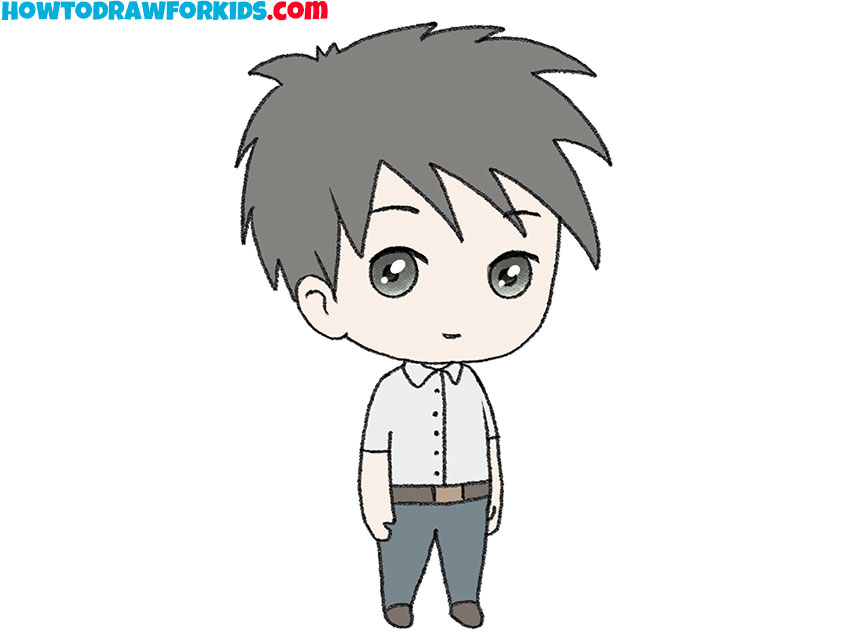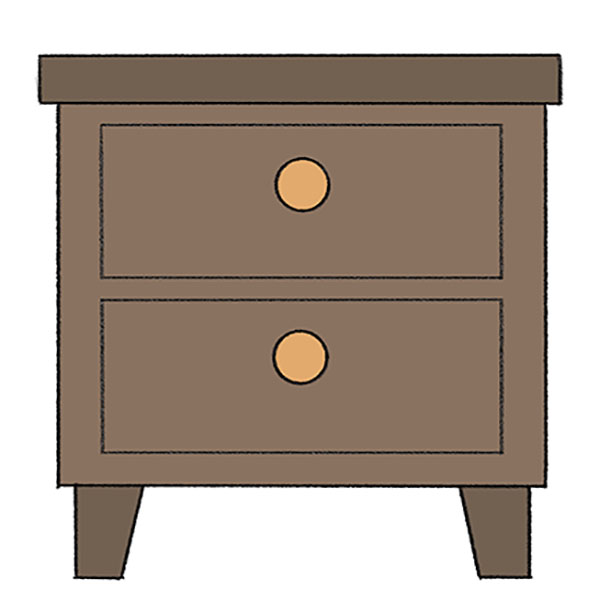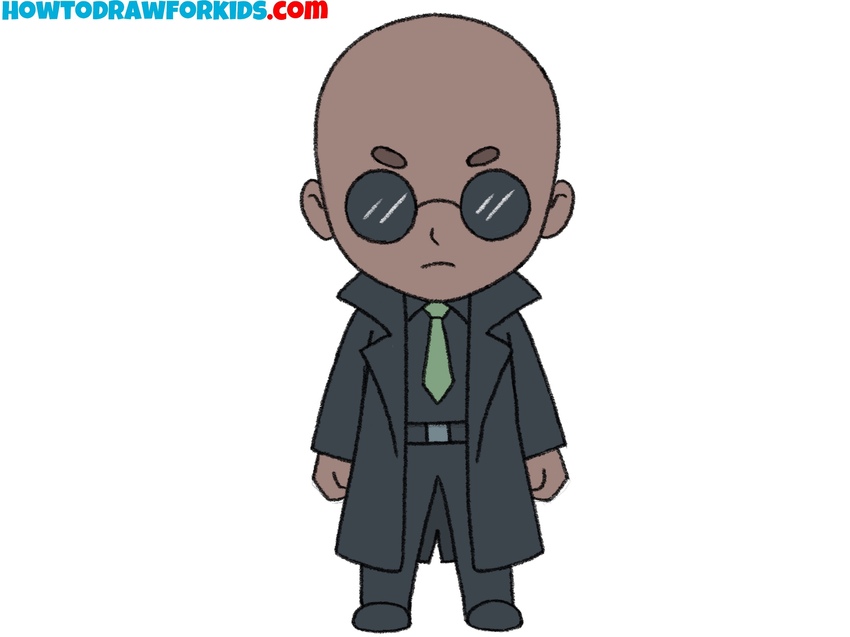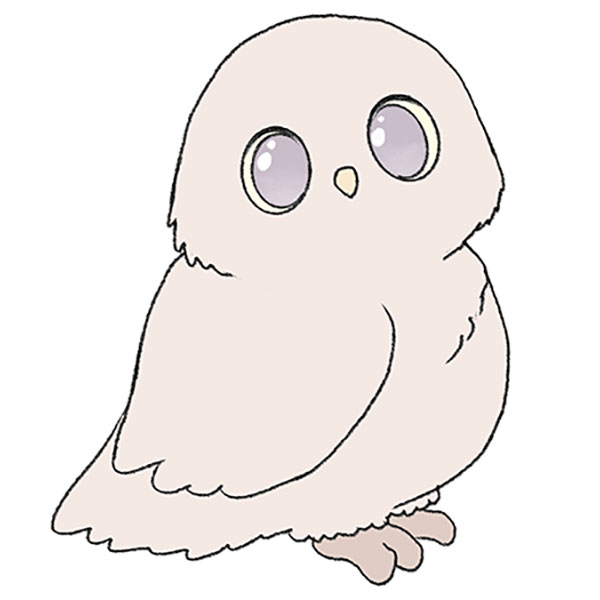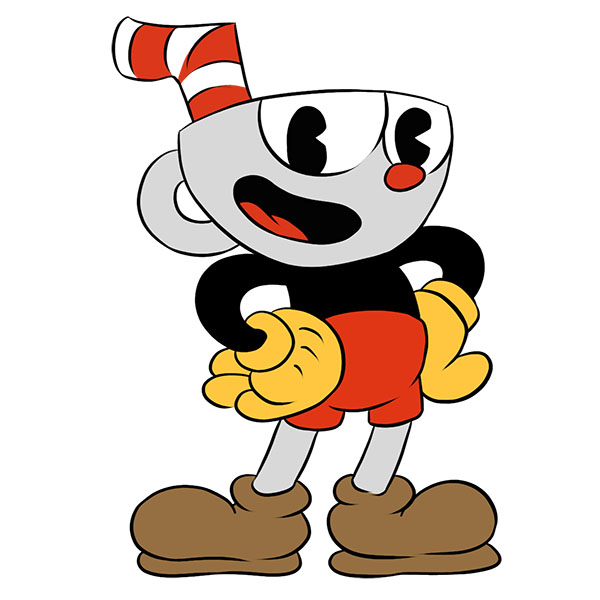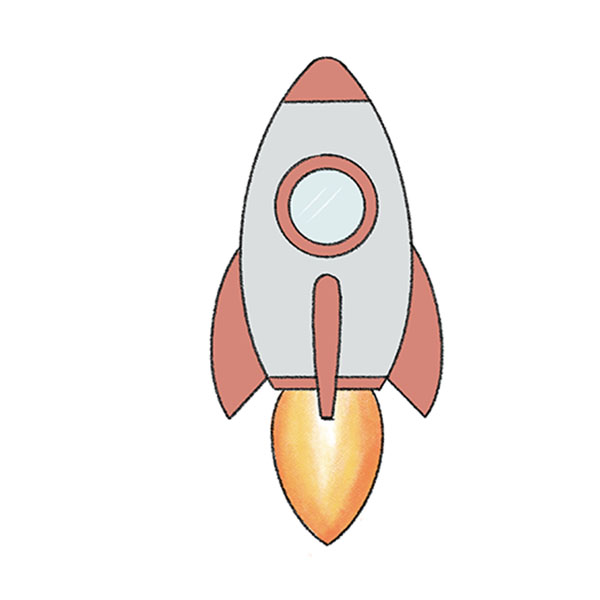How to Draw a Crab
Capturing the whimsical essence of ocean life starts with a simple task: how to draw a crab. I’ve put together this tutorial to help you navigate through the playful process of depicting these fascinating sea creatures. My easy-to-follow method will have you sketching crabs like a seasoned artist in no time.
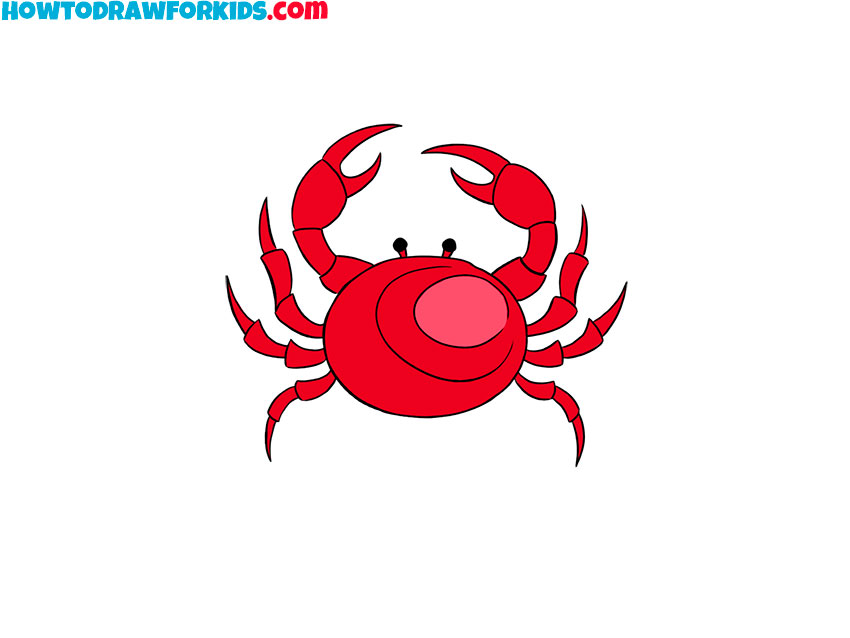
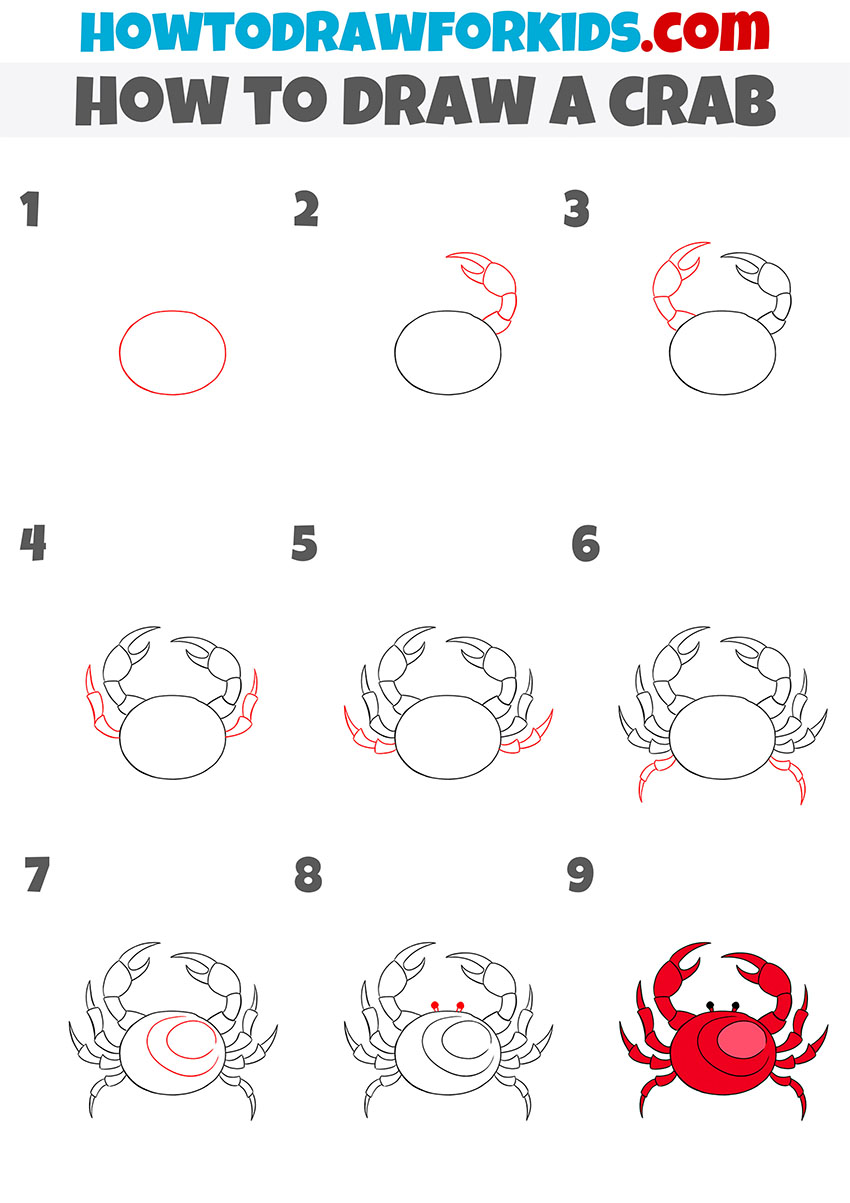
How to Draw a Crab: Basic Information
Ever been fascinated by the seaside dwellers and wanted to learn how to draw a crab? That’s exactly why I created this lesson, to take you through the joy of sketching these captivating creatures. My approach breaks down their complex form into simple shapes that any aspiring artist can confidently tackle.
This illustration focuses on the crab’s unique body structure, capturing its round body and iconic claws. Through my method, we’ll explore the art of transforming simple circles and ovals into the main body and adding dimension with the claw’s details. It’s all about progressing slowly, adding one element at a time to keep the process enjoyable.
As we approach the conclusion of how to draw a crab, we focus on personality and motion. The claws and legs, once simple lines and shapes, evolve into expressions of the crab’s character. My goal is to empower you to not just replicate an image, but to infuse your artwork with a dash of your own creative spirit.
Crab Drawing Tutorial
Materials
- Pencil
- Paper
- Eraser
- Coloring supplies
Time needed: 30 minutes
How to Draw a Crab
- Draw the outline of the body.
Determine what the size of the picture will be and draw an even oval.
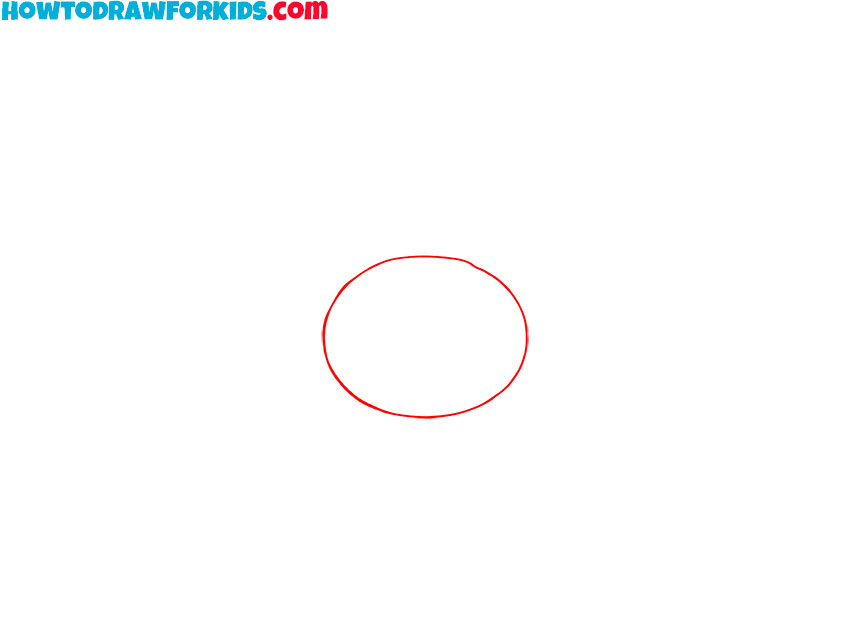
- Depict one claw.
On the right side, draw the claw, which consists of several elements.

- Add the second claw.
Repeat the previous step and draw the same claw on the left.
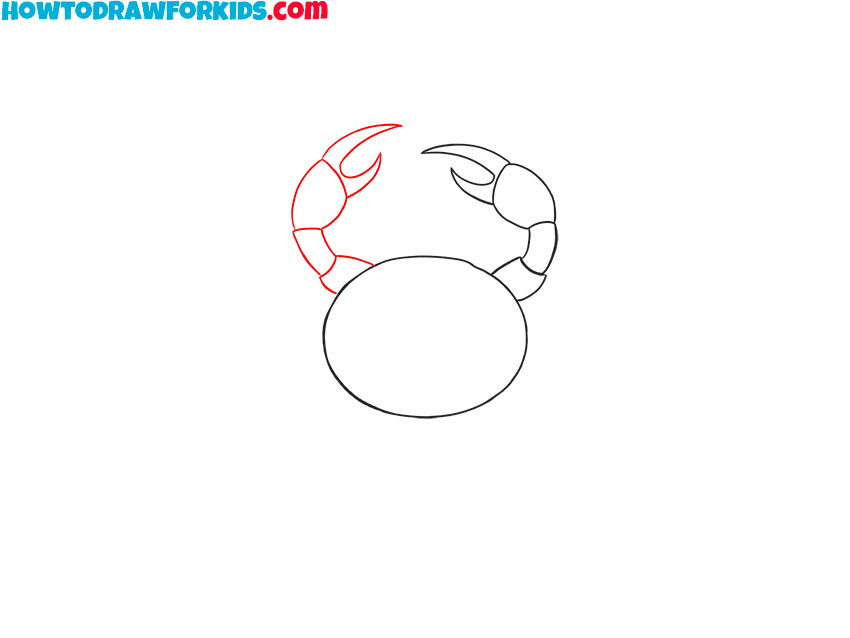
- Start drawing the side paws.
On each side, sketch out the thin, pointed paws.
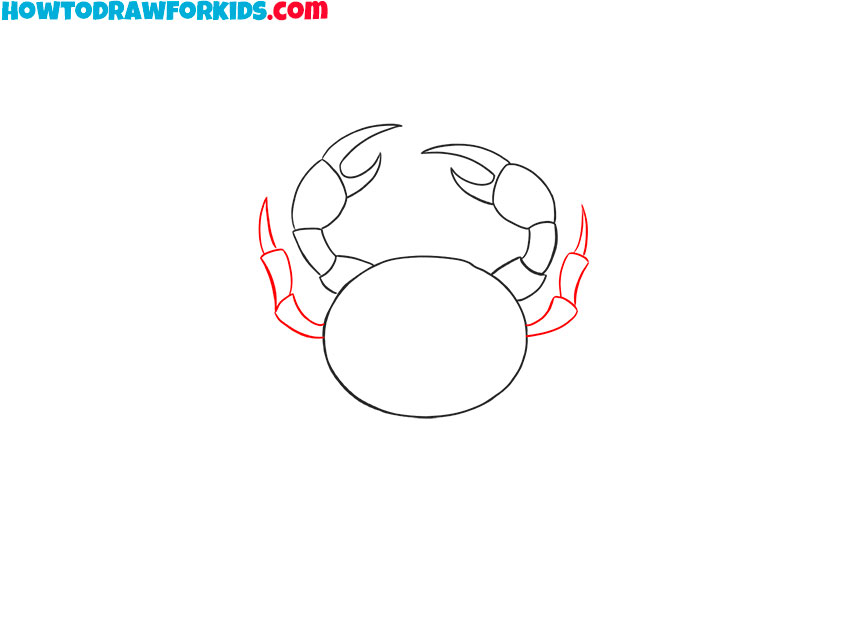
- Add the next pair of paws.
Depict the same paws as in the previous step, but position them differently.
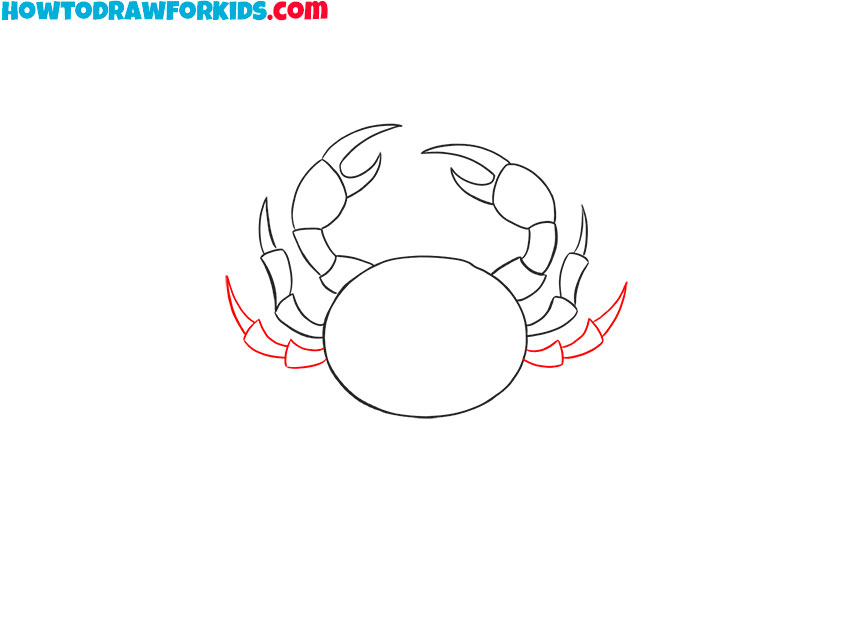
- Draw the last pair of paws.
Depict two small pointed paws that point down.
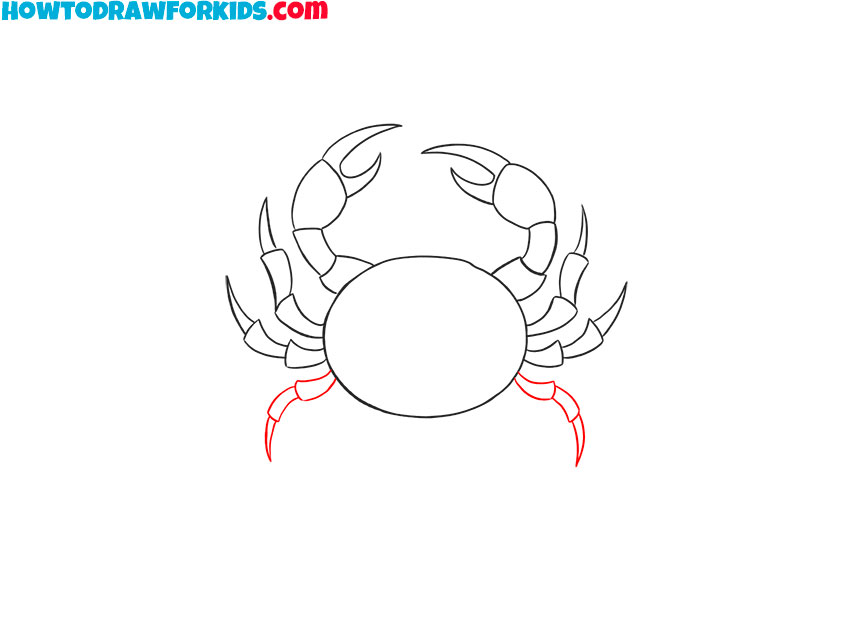
- Detail the shell.
Draw rounded lines on the shell.
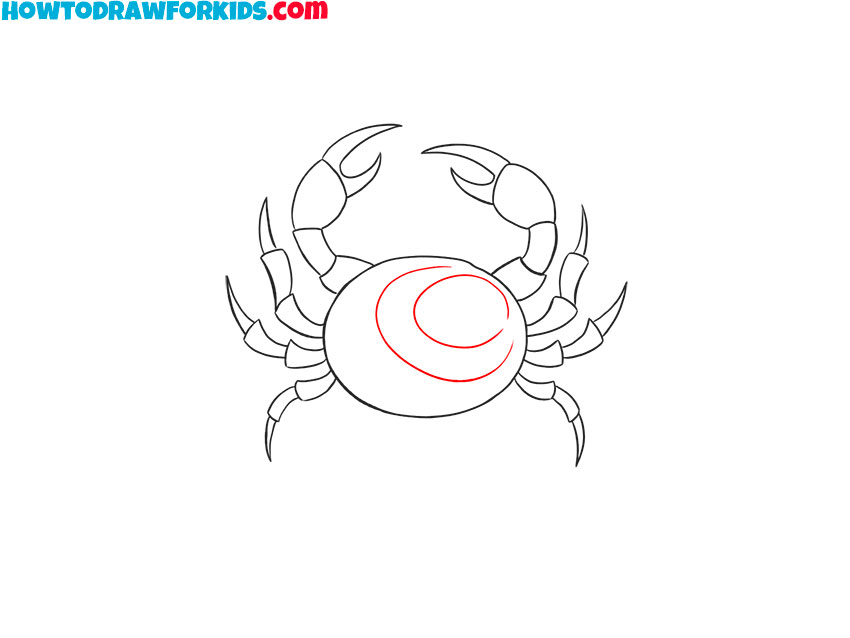
- Sketch out the eyes.
In the upper part of the torso, depict two bulging eyes.
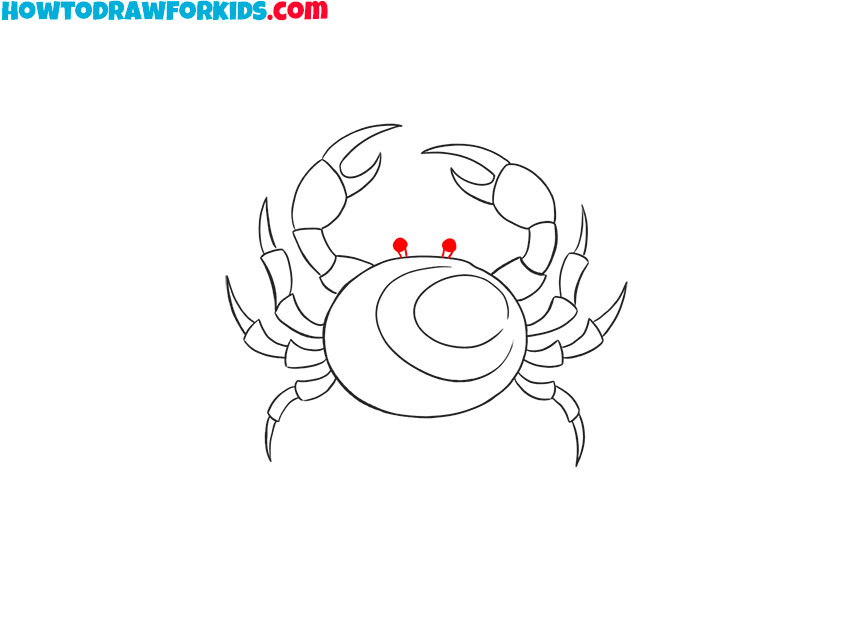
- Color the crab.
Use red to color the body of the crab, color the spot on the shell pink.

Additional Content
To enhance your artistic venture, I’ve prepared a complimentary PDF file for this lesson. It’s a succinct version, easily downloadable for those moments when the internet is just a distant thought. Crafted for convenience, it’s your portable guide to practicing anytime, anywhere.
While this PDF does not contain the step-by-step walkthrough or the in-depth advice from the online lesson, it offers additional exercises. These are designed to sharpen your skills and encourage further exploration of drawing techniques, ideal for after you’ve mastered the basics.
Consider this PDF an artistic companion to accompany you as you progress beyond the initial stages of learning to draw. It’s filled with challenges and prompts to inspire you to refine your drawings, to experiment, and to capture the essence of whatever subject catches your fancy. Keep it close, and let it guide you towards ever more creative horizons.
Alternative Drawing Techniques
In addition to the primary drawing tutorial, I’ve put together several alternative techniques for sketching crabs that will keep your practice sessions engaging and challenging. Each method introduces a different approach to drawing the same subject, encouraging you to think creatively and develop a versatile skill set.
These alternatives are designed to build upon the skills you’ve already begun to cultivate, allowing you to experiment with line quality, detail, and proportion. With every new technique you try, you’ll find your ability to capture the essence of the crab, and indeed any subject, becoming more intuitive and refined.
Incorporating these various techniques into your practice regimen is a surefire way to enhance your artistic talents. They are crafted to push you slightly out of your comfort zone, ensuring that with each crab you draw, you’re not just repeating what you know – you’re improving it.
How to Draw a Cute Crab
This delightful drawing method begins with a simple oval, laying the foundation for our charming crab’s body. The initial shape sets the stage for personality and proportion, ensuring a friendly and approachable character emerges from the page. It’s the canvas upon which we’ll add joyful details to bring our crab to life.
The next step introduces the crab’s eyes and smiling mouth, infusing our sketch with warmth and a hint of playfulness. Gentle lines for the limbs and claws are added, capturing the essence of the crab’s movement. The emphasis here is on creating a whimsical representation that feels both lively and endearing.
In the final phase, we refine the claws and legs, giving our crab distinction and form. This method is about more than simply drawing; it’s about crafting a character that could scuttle off the page. Each line you draw combines to reveal not just a crab but a story and a personality within your creation.

Perfecting Your Drawing with a Crab’s Surroundings
As the waves of our artistic endeavor recede, leaving behind the joyous creation of a charming crab, it’s time to cast our nets wider and explore the vast ocean of possibilities that enhance and complement our drawing.
Below, you’ll find suggestions for adding depth and context to your marine masterpiece, tips that invite you to not only improve your drawing but to enrich the world in which it resides.
- Sketch Seaside Scenery: Place your crab on a sandy shore, using textured strokes to create the beach. Imagine the crab sidling by the water’s edge, where the land meets the sea, and depict gentle waves lapping at the sand.
- Craft Companions: Consider the crab’s companions in the vast ocean. Draw a starfish with its arms outstretched or a curious fish peeking from behind a coral. Each character can offer a different expression or pose, adding to the narrative of your seascape.
- Invent an Interaction: Have your crab interact with elements of its environment. Perhaps it’s reaching for a seashell or standing atop a rock, surveying its surroundings with keen eyes. Show the crab’s claws engaged in action – maybe one is raised in a friendly gesture.
- Dabble in Details: Embellish your crab with patterns on its shell or subtle shading that reflects the underwater ambiance. Think about the play of light through water and how it dances over the crab’s back.
- Animate with Accessories: Give your crab a personality by adding whimsical accessories. A tiny hat perched between its eyes or a piece of seaweed draped like a scarf can transform your sketch into a character with a story.
- Design Dynamic Backgrounds: Expand the scene with underwater flora like swaying seaweed, anemones, or a hidden treasure chest. The background can suggest a hidden reef or a sunken ship, creating a sense of depth and adventure.
- Color with Context: When adding color, think about the time of day and the environment. Warm sunset tones can cast a different mood compared to the cool blues of the deep sea. Consider how the crab’s color might adapt to its surroundings.
- Engage with Ecosystems: Introduce elements that speak to the crab’s ecosystem, such as pebbles, bubbles, or other marine creatures. These should complement the crab and not overpower it, maintaining the focus on your central drawing.
- Illuminate with Imagination: Let your imagination dictate the scenery. Perhaps your crab is part of a larger fantastical world, with underwater castles or mermaid companions. This encourages creative freedom and storytelling through your art.
As our session draws to a close, it’s clear that drawing is more than replicating what we see—it’s about envisioning what could be. The crab you’ve drawn is not just a creature on paper, but a portal to an entire world brimming with life, interactions, and stories waiting to be told.
Each suggestion here is a stepping stone to enhancing not just the skills you wield, but also the vision you nurture within your artist’s soul. So, take these tips as your compass, navigate through the seas of creativity, and discover the uncharted waters of your artistic potential.
Conclusion
Our artistic adventure in capturing the cuteness of a crab has come to a charming conclusion. If you’ve enjoyed this, I’m excited to share a whole sea of other tutorials on my website – why not try your hand at drawing a sturdy door or the gentle glow of a candle next? Each lesson is designed to open new doors to your creativity.
I warmly invite you to join my social media family, where the latest lessons and creative tips are just a click away. And your thoughts are always cherished; leave a comment on what you’d love to draw next. Your suggestions fuel the creativity that shapes our future lessons, keeping the art flowing and our community vibrant.

